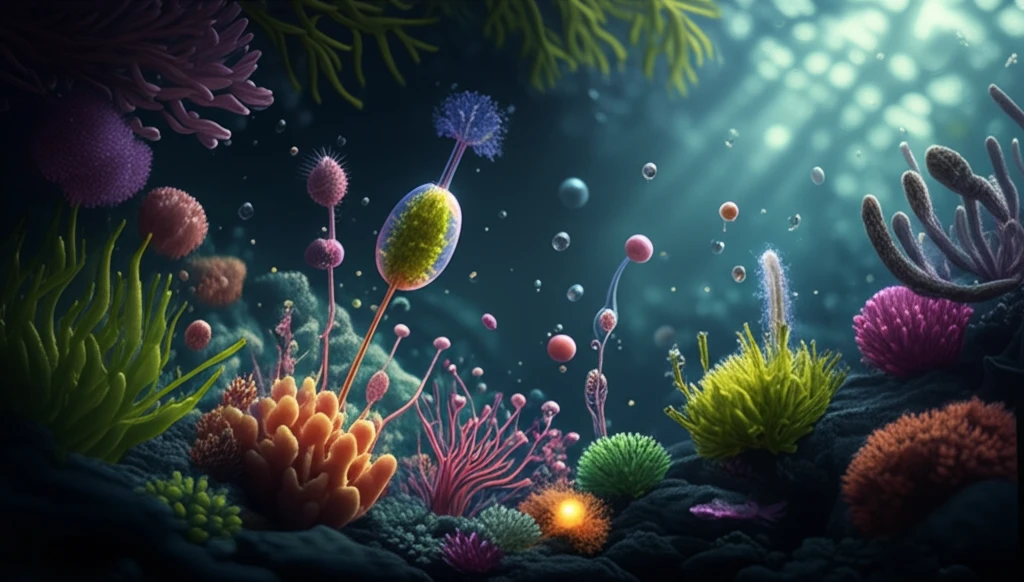
Hidden Wonders: Unveiling the Secrets of Microalgae in Our Ecosystems
"Tiny but mighty, microalgae play a crucial role in aquatic environments. Explore their diversity, ecological functions, and why they matter to our planet's health."
Microalgae are the foundation of many aquatic ecosystems, particularly in shallow lakes. Unlike larger aquatic plants, microalgae can quickly shift their dominance based on water conditions. These tiny organisms, both in the water column and on the sediment, are essential for linking inorganic compounds to the food web, providing vital nutrients to higher trophic levels.
In shallow estuaries, a fascinating phenomenon often occurs: high benthic microalgal biomass exists alongside low primary production and phytoplankton biomass, while pelagic areas boast high rates of primary production. This contrast highlights the complex interactions within these ecosystems, influenced by factors like light availability, grazing pressure from zooplankton, and the settling of phytoplankton cells onto the sediment.
The opening and closing phases of estuaries significantly impact microalgae populations. For example, during closed phases, diatoms may dominate phytoplankton communities, while open phases see an increase in dinoflagellates and cryptophytes. Nutrient availability and light penetration play critical roles in these shifts, underscoring the dynamic nature of these environments.
Diversity and Ecological Significance of Microalgae

The diversity of microalgae in ecosystems like Lake St. Lucia is remarkable, reflecting the variety of habitats and environmental changes. While long-term quantitative studies are limited, the existing research reveals a complex community structure, especially among cyanobacteria and diatoms. These microorganisms form prominent benthic mats, particularly under hypersaline conditions, showcasing their resilience to extreme environments.
- Light Availability
- Nutrient Levels
- Salinity Fluctuations
- Grazing Pressure
Why Microalgae Matter
Understanding microalgae is crucial for maintaining healthy aquatic ecosystems. These tiny organisms play a significant role in primary production, nutrient cycling, and supporting complex food webs. By studying their diversity, ecological functions, and responses to environmental changes, we can better manage and conserve these vital components of our planet's ecosystems. Continuous monitoring and research are essential to uncovering further secrets of microalgae and harnessing their potential benefits.
